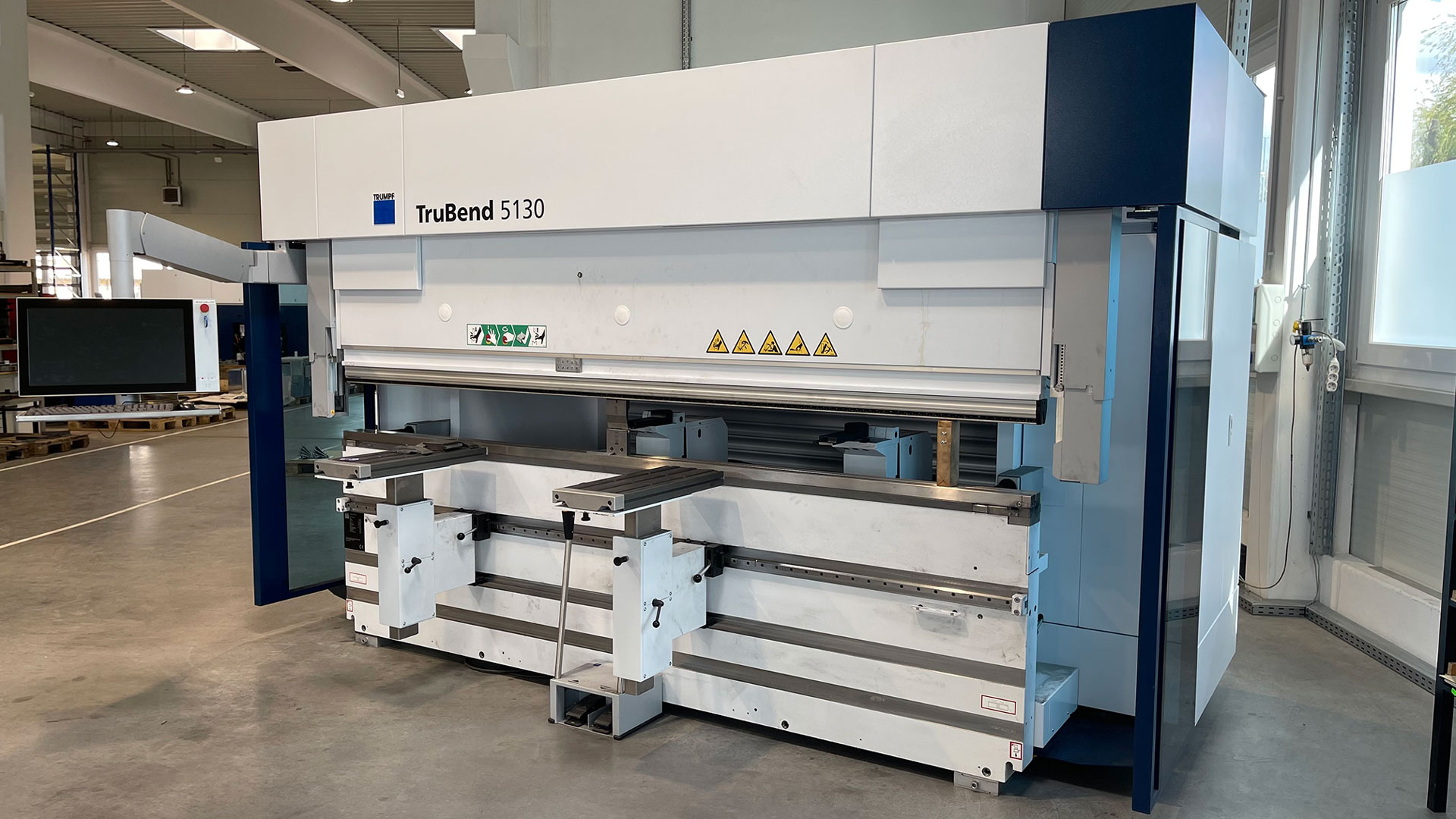Edge bending is one of the most commonly used metalworking process, in which metal sheets are bent to a specific angle or shape to meet manufacturing specifications. This technology is key to many industries, producing durable, accurate and aesthetically pleasing metal parts. In this article we explain what edge bending is, how it works and which industries benefit from it.
What is edge bending?
Edge bending in which a metal sheet is clamped between the tools of a bending machine (such as an edge bending press) and the material is then bent to a specific angle or shape. The behaviour of the metal during this process depends on three basic factors:
- The quality of the material: During bending, the metal is subjected to both tensile and compressive forces.
- The geometry of the tool: The shape and size of the bending tool determines the shape of the finished product.
- The bending angle and the compressive force: The right angle and pressure guarantee the desired result.
The precision of the process is of paramount importance, as the end result must be not only functional but also aesthetic, especially in industries where visible elements are involved.
How is edge bending done?
Edge bending process in general modern bending machines which ensure precise movement and power distribution. The main parts of the machines are:
- Upper tool (bending blade) that acts on the material.
- Lower tool (sticker) that supports the plate.
In the operation of the machine, the metal plate is placed between the two tools and the pressure of the upper tool causes the plate to take the shape of the lower tool. The result is a precision-bent metal part.
Use of edge bending in different industries
The versatility of edge bending makes it a preferred method for many industries. Here are some examples:
Construction
In the construction industry, elements made of bent sheet metal are often used, for example:
- Roof tiles
- Gutters
- Ventilation systems
These elements provide durability, aesthetics and ease of installation.
Mechanical engineering
In machine manufacturing, the precise size and reliability of edge-bent parts are key. This includes:
- Engine houses
- Spare parts holders
- Protective covers
Automotive industry
In the car industry, bent sheet metal is essential for the production of bodywork, chassis and other structural components. Bending technology ensures that car components are both strong and lightweight.
Furniture industry
In modern furniture manufacturing, edge bending plays an important role in the production of metal frames, table tops and other decorative elements. The thin, curved metal elements give furniture a clean, modern look.
Electronics industry
Precision-bent sheets are often used in the manufacture of electronic devices such as computer housings or server racks.
What are the benefits of edge bending technology?
- Accuracy and repeatability: Modern machines work with a minimum margin of error.
- Cost-effectiveness: The process is fast and efficient, making it economical even in large quantities.
- Versatility: Metal can be bent into almost any shape, from simple angles to more complex profiles.
- Durability: Curved elements provide structural strength while preserving the integrity of the material.
What machines are used for edge bending?
Edge bending is carried out with different machines, the size, type and control of which depend on the application and the precision required. The most common types of machines and their characteristics are described below.
Edge bending presses
Edge bending presses are the most common machines for edge bending. They can be mechanical, hydraulic or CNC controlled.
Hydraulic edge bending presses
- Operation: Hydraulic cylinders move the upper tool (blade) to bend the plate.
- Benefits: They provide high compressive force, making them suitable for bending thicker sheets. They allow even and precise bending.
- Usage: Ideal for machining larger workpieces or industrial-sized sheets.
Mechanical edge bending presses
- Operation: Mechanical energy transmitted through a rotating shaft bends the disc.
- Benefits: Simpler and faster operation, less maintenance.
- Disadvantages: Not as powerful as hydraulic machines, so used for thinner materials.
CNC edge bending presses
- Operation: The bending process is automated by computer control, the machine works exactly according to the parameters set.
- Benefits: High precision and repeatability.
- Even more complex shapes can be made quickly and flawlessly.
- Efficient programming in mass production.
- Usage: Manufacture of electronic enclosures, automotive and machinery components.
Live bending machines (free benders)
These machines are used for bending small to medium sized workpieces where high compressive forces are not required.
- Manual edge benders: Used in small workshops for simple and quick bending. Ideal for thin sheets and small quantities.
- Electromechanical edge benders: These machines are motor-driven, allowing more precise and faster bending than manual versions.
Roll bending machines
Although not specifically edge benders, roller machines can also be used to make simple bends, for example to create curved or cylindrical shapes.
Three- or four-reel versions: They can create a variety of shapes and curves that are not limited to flat bends.
Panel folding machines
Special edge bending machines that automatically bend sheets from several sides. They are mainly used to produce complex box shapes and framed parts.
- Benefits: High precision. Ability to produce complex bending patterns.
- Usage: Electronics and furniture industries where complex, multi-sided bending is required.
Robotic edge bending systems
Automation is becoming more and more important in the industry, so robotic edge bending systems are becoming more common. These systems use robotic arms to position the plate while the bending machine does the actual work.
Benefits:
- High efficiency in high-volume production.
- It requires minimal human intervention.
- Suitable for more complex parts.
- Usage: Automotive industry, large series production.
Special bending machines
Some industries use specific bending machines for their specific needs, for example:
- Tube bending machines: Although not specifically edge benders, these machines are used to accurately bend tubes and profiles.
- Profilers: Used for shaping shaped metal profiles and sheets with special cross-sections.
What criteria are used to choose a machine?
The choice of machine for edge bending depends on the following factors:
- Plate thickness and material: For thicker and harder materials, a machine with higher pressure is required.
- Complexity of the product: For simple shapes, a hand bender may be sufficient, while for more complex profiles a CNC machine is needed.
- Quantitative needs: For large series production, robotic systems and CNC machines are ideal.
- Accuracy and repeatability: If precision fitting of parts is important, CNC or hydraulic machines are recommended.
Concluding thoughts
Edge bending is an essential technology in modern industry, offering a combination of precision, durability and aesthetics. From construction to automotive and electronics, many industries rely on this reliable process. And as the technology continues to evolve, it will allow for even more complex and innovative products in the future.
If you are looking for a for the manufacture of metal structures, for plate tempering, edge bending or possibly laser cutting you need, please feel free to contact us. We have state-of-the-art systems and technologies and we will get the job done quickly, efficiently and with high quality.




